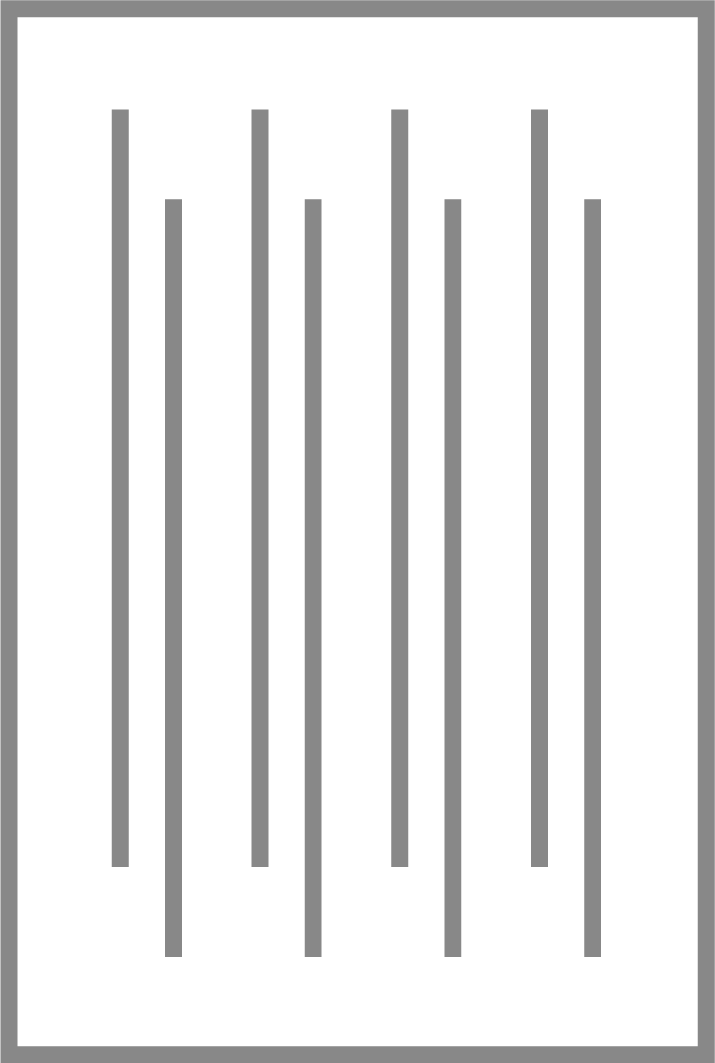the art of the gospels: the four holy gospels
makoto Fujimura
March 28, 2020 - December 12, 2020
Waterfall presents The Art of the Gospels : The Four Holy Gospels by Makoto Fujimura, which has been exhibited in the Museum of Bible as well as at Jundt Art Museum in Gonzaga University.
Celebrating the 400th anniversary of the King James Version(KJV) Bible, Makoto Fujimura created five primary frontispieces. The five large-scale paintings are, "Charis-Kairos (The Tears of Christ)" (64 x 80 inches), and four opening plates (48 x 60 inches), one for each of the four Gospels. He also painted eighty-nine initial letters, each painted (and many adorned with gold flecks and foil) specifically for each chapter opening throughout the Gospels. Additionally, he created more than seventy individually painted illustrated reflections and embellishments, complementing the Gospel text on each two-page spread throughout the book.
CHARIS -KAIROS (The Tears of Christ)
“Charis (Grace) Kairos (Time)” was painted with water-based Nihonga materials (Japanese style painting), with Fujimura’s focus on the tears of Christ (John 11) – tears shed for the atrocities of the past century and for our present darkness. Charis is a series of paintings he did in 2008 (Makoto Fujimura had a major exhibit in NYC at Dillon Gallery, titled ‘Charis’), so the painting is already part of a greater body of works. ‘The Tears of Christ’ is a subtitle given to this particular work for the Four Holy Gospels project, so it is not a direct translation of the Greek, but an additional title given to the piece.
Matthew - Consider the lilies
“Matthew - Consider the Lilies” is done with over sixty layers of finely pulverized precious minerals (azurite and malachite), oyster shell white, and painted with sumi ink that has been cured for over a century. Also gold and platinum powders are mixed with Hide glue (Japanese Sanzenbon, which is no longer being made), to adhere the minerals onto a hand-pulled Japanese paper. The painting depicts Easter lilies, with triumvirate flowers opening up, but with the suggestion that even these common lilies are transformed into a post-Resurrection, generative reality.
mark - water flames
“Mark - Water Flames” series depict the way in which flames not only consumes, but ultimately sanctify. These works recall the visual language of the apocalyptic, moody paintings of the American artist Mark Rothko (1903-1970) - using Japanese vermillion, gold, platinum powders and cochineal (made from India’s dye made from an cochineal insect). The work moves our gaze upward, even as we stand in the ever-expanding Ground Zero conditions of the world.
luke - prodigal god
“Luke - Prodigal God” is based on a well known tale of the lost son in Luke 15, and is taken from my pastor Timothy Keller’s book, Prodigal God. The visual complexity of the work depicts my own inner struggle between legalism of religion (the elder brother) and the “recklessly spendthrift” nature of the Father’s love in the story. In the art world and culture in which we celebrate the wayward, but not having the language to bring the lost (myself included at times) back home, these series of works probe deeply into the tension that exist within my heart to love deeply - in spite of the legalism and the waywardness that prevails in the wider culture.
john - in the beginning
“John - In the Beginning” visually echoes the “Charis-Kairos” cover piece in the same way that the beginning of the Gospel of John echoes the beginning of Genesis. The first chapter of the Gospel of John speaks not only about the origin of all creation in Jesus, but also about the mystery behind creation. Art needs to inhabit such mysteries - to open us up to the generative reality of the deeper questions that lie behind our questions.
The portion of John - In the Beginning was done as a live performance, as part of an ongoing collaboration with Jazz percussionist/composer Susie Ibarra (see portion of Plywood documentary here).
The illuminated legacy - the 89 letters
For “89 Letters”, Fujimura came into the studio each day and read a chapter he was working on, starting from Matthew. He felt privileged to be able to spend so much time, praying and meditating on each chapter, and then thinking of generative ways to create imagery. Having the overall theme of “Jesus wept” in mind, while paying close attention to the content of the chapters, he first selected a particular focus of each. One could do thousands of images for each chapter, so it was important to select an emphasis or area of interest.
Throughout each letter, Fujimura wanted the playfulness to be imbued in the image, as well as the greater stories to be reflected as well. The embellishments were done last, after a lengthy process of preparing the text and the initial letters onto a high quality watercolor paper.




















